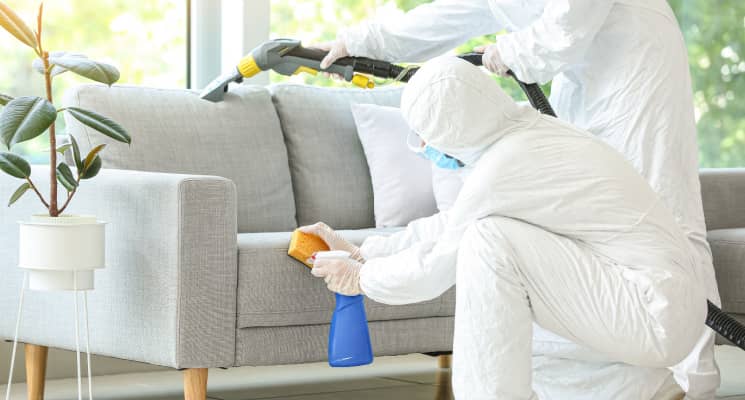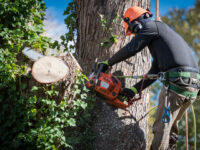Understanding Pests Behavior: Preventative Measures and Treatment Options
Pest Control West Vancouver involves finding ways to manage unwanted organisms without harming people, property, or the environment. This can be done by prevention, detection, and treatment.
Preventive measures include removing food, water, and shelter. Regular garbage removal is another important preventive measure. Clutter can provide hiding places for pests, so remove any piles of debris.

Keeping pests out is the best way to protect your property and environment. Pests can be more than just a nuisance, they cause damage to homes and businesses, spread disease, ruin crops and disrupt the natural environment. Pest control services can help you keep your property safe from pests and prevent future problems.
Integrated Pest Management is an approach to pest control that uses long-term prevention of pests or their damage through a combination of techniques, including habitat manipulation, change in cultural practices and the use of resistant plant varieties. It aims to reduce the need for pesticides.
Threshold-based decision making relates to scouting and monitoring to determine whether or not a particular pest population has reached unacceptable levels, either for esthetic or health reasons. For example, noticing a few Japanese beetles in the garden now and then is unlikely to warrant action, but seeing them everywhere might. Similarly, a plant with significant insect damage might be considered beyond saving and might need to be removed or replaced.
Sanitation practices can prevent the spread of some pests. This includes proper food handling and storage, ensuring that garbage is picked up regularly and that facilities are kept clean. It also includes decontaminating equipment, reducing the carrying over of pests from one location to another and preventing the spread of diseases by using pest-free seeds and transplants.
Weather conditions affect pest populations directly and indirectly. Rain and cool temperatures kill or suppress certain pests, while hot and dry conditions encourage others. Pests that feed on plants may be affected by drought and other weather events, but some can also be controlled by plant growth regulators, herbicides or fertilizers.
Insect predators and parasitoids also help to limit pest numbers. These natural organisms are often used in biological controls, where they are bred and released into the environment to act as a natural enemy of the pest.
Chemical pesticides can be used for short-term control of pests where other tactics have been ineffective or are impractical, but they must always be carefully applied to avoid unnecessary harm. They should be used according to the manufacturer’s instructions and safety warnings.
If you choose to use chemical pesticides, look for products with the lowest toxicity and the least risk to people, animals and the environment. Avoid using more than is necessary, as even small amounts of some pesticides can be hazardous if they are ingested or inhaled. Whenever possible, try to use baits or traps for pests rather than spraying them, and avoid saturating the area being treated. If you must spray, use only a small amount and as close to the pest as possible. Ensure that any unused pesticide is properly stored to prevent its accidental release into the environment. Whenever possible, select a pesticide that is effective against the specific species of pest you are trying to control.
Detection
Pests damage crops, buildings, and property. They may also pose health risks to people and pets. For example, rodents can carry disease-causing organisms and stinging insects can cause allergic reactions in humans. Therefore, it is important to identify and address pest issues as they arise. Detecting pest problems early can prevent significant damage and minimize potential risks.
Regular property inspections are an effective way to spot pest infestations in their early stages. Inspectors can check areas where pests are likely to hide or nest, such as in attics and basements, and can assess conditions that may attract pests, such as water sources and food. In addition, physical barriers can be installed to exclude pests. These can include animal traps, sticky cards for insects, or netting and mesh for plants.
To effectively monitor pests, it is essential to understand their biology. This includes knowing what they feed on, where they hide, and how they reproduce. Monitoring can be done manually by trapping and scouting, or with automated devices such as drones and computers. Pest identification is critical for determining whether or not a pest should be controlled, and can help determine the best control methods and time to use them.
Identifying pests can be challenging, as many species look similar. Fortunately, there are several key indicators that can help distinguish between continuous pests and sporadic ones:
When pests are found, it is important to take action immediately. This can include removing the pests, applying pesticides, or using other control techniques.
Detecting pests in the early stages is crucial for reducing the impact they have on a home, building, or garden. Pests can damage crops, spread disease, and cause allergies. They can also threaten the safety of occupants, such as stinging insects or rodents that introduce disease-causing organisms into homes and buildings. The presence of pests can also lead to poor indoor air quality, causing allergies and asthma.
Regular pest inspections by an experienced professional can help identify potential pest problems before they develop into infestations. Pest control professionals can check for signs of pests such as droppings and gnaw marks, and can inspect for conditions that may attract them, such as water sources, food, and shelter. This allows them to recommend preventative measures that can stop the pests before they cause major damage or become a public health risk. This can save both time and money, as preventative measures are usually less expensive than controlling an infestation once it occurs.
Treatment
Pest control involves the elimination or management of undesirable organisms, such as rodents, ants, termites, bed bugs and weeds. It may also involve the manipulation of natural ecosystems to reduce pest populations and prevent them from damaging property or endangering health and safety. It can involve methods such as exclusion, quarantine, repulsion, euthanasia, physical removal or chemical treatments.
Routine pest control can significantly reduce the risk of property damage and deterioration from insects, rodents, weeds and other critters that can destroy wood, fabrics and wiring. In addition, it can save money by preventing costly repairs and replacements. It can also help preserve the value of a home or business by keeping it free from unsightly and unsafe conditions.
Preventive pest control measures include removing food, water, shelter and entry points from the property. This may include cleaning up debris, fixing leaks, sealing cracks and crevices, and practicing good sanitation. It can also involve reducing the presence of environmental attractants, such as putting out bird feeders and baths, and eliminating the use of plant materials that attract pests, such as composting or mulching.
When these prevention measures fail or are impractical, treatment steps in to deal with existing infestations. This often includes the use of chemical sprays and baits. These can be used inside and outside the house, depending on the type of pest and the severity of the problem.
Many pesticides have a low toxicity level and are safe for people, pets, plants and the environment when used according to label instructions and appropriate safety protocols. Some are volatile and evaporate quickly, making them less harmful than others that remain on surfaces for extended periods of time. Some are designed to break down quickly after application, while others are formulated to have a lower impact on the environment, containing chemicals that can be degraded by soil microbes and other natural processes.
Most pests have certain windows of vulnerability, or stages in their life cycle, that make them easier to control than at other times. For example, weeds are easiest to kill when they are seedlings or young, while insects are easiest to kill in their immature, egg-laying or pupal stages. This makes it important to accurately identify the pest species and stage of infestation when choosing control methods.
When chemical treatments are necessary, it is important to remember that pesticides should be used as a last resort. Instead, try using non-chemical pest control methods first, such as traps and physical barriers. In addition, always read and follow the instructions on a pesticide label, and avoid over-spraying or fogging. It is also important to take precautions when using household pesticides, such as wearing rubber gloves and masks, and washing clothing and equipment immediately after use. This will help minimize exposure and ensure that pesticide residues do not get into the air or on food.






